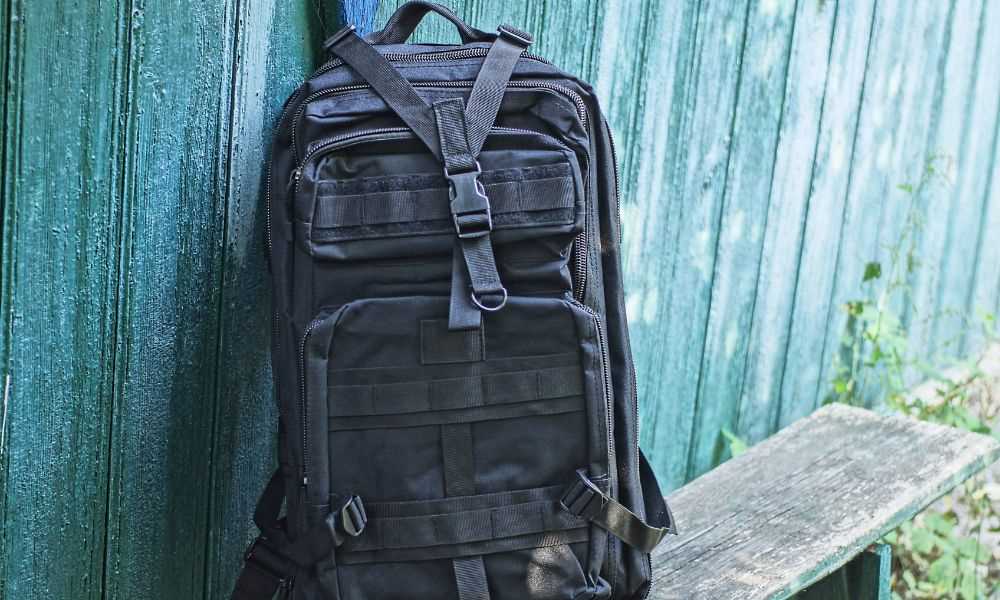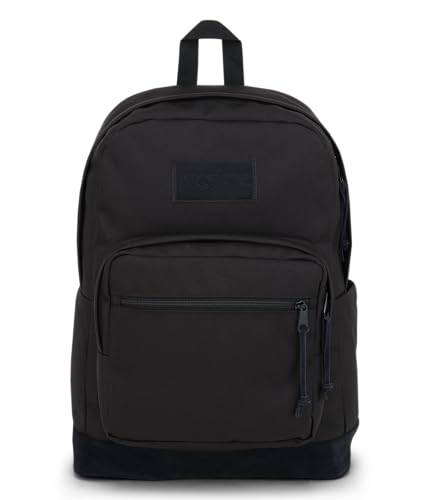




For those seeking durability and functionality in their gear, the choice of fabric can make all the difference. This article breaks down various textiles, highlighting their strengths and weaknesses, helping you make an informed decision for your next adventure. Whether you’re a hiker, a student, or a daily commuter, understanding these options will enhance your packing experience.
We will discuss materials like nylon, polyester, and canvas, providing insights into their properties, such as water resistance, weight, and abrasion resistance. You’ll discover which options are best suited for different activities, ensuring your gear withstands the demands of your lifestyle.
By the end of this piece, you’ll have a clear picture of what to look for in a fabric, empowering you to select the right option that meets your needs without compromise. Prepare to elevate your packing game with knowledge that translates into better choices and improved performance.
Best Materials for a Durable Carrying Solution
Choosing the right fabric for a reliable carrying solution is essential for longevity and functionality. Common options include nylon, polyester, and canvas, each offering distinct benefits for different uses.
Nylon is a popular choice due to its lightweight and durable nature. It resists abrasion and is often treated with water-resistant coatings, making it suitable for various outdoor activities. Polyester, while slightly heavier, provides UV resistance and is less prone to fading, which is ideal for daily use or travel. Canvas, although heavier, offers a classic look and increased sturdiness, making it a favorite for casual styles.
Key Features to Consider
- Water Resistance: Look for fabrics that include water-repellent coatings for protection against the elements.
- Weight: Lightweight options are better for travel, while heavier fabrics may provide more durability.
- Abrasion Resistance: Fabrics with high denier counts typically offer better resistance to wear and tear.
- Eco-Friendliness: Consider materials made from recycled sources or sustainable practices.
In conclusion, selecting the right fabric involves weighing durability, weight, and specific use cases. Understanding these factors will ensure a practical and long-lasting choice for any carrying needs.
Durability of Nylon vs. Polyester in Backpacks
Nylon generally offers superior durability compared to polyester. It has a higher tensile strength, making it more resistant to rips and tears. This quality is particularly beneficial for users who engage in rugged outdoor activities or require a robust option for daily commuting.
Polyester, while also durable, tends to be less resistant to abrasion than nylon. However, it is often treated for increased water resistance, making it a suitable choice for environments where moisture is a concern. Understanding the specific needs can guide the choice between these two fabrics.
Comparative Analysis
Here are some key differences between nylon and polyester:
| Feature | Nylon | Polyester |
|---|---|---|
| Tensile Strength | Higher | Lower |
| Water Resistance | Moderate | Higher (with treatment) |
| Weight | Lighter | Heavier |
| Cost | Generally more expensive | Generally less expensive |
Choosing between nylon and polyester depends on intended use. For heavy-duty tasks, nylon is preferable due to its resilience. Conversely, if water resistance and cost-effectiveness are priorities, polyester may be the better option.
Water Resistance: Comparing Coated Fabrics and Waterproof Materials
Coated fabrics offer a practical solution for those seeking some level of water protection. These textiles are typically woven with a polymer coating that repels water, making them suitable for light rain or splashes. However, their performance can be limited under prolonged exposure to moisture.
Waterproof materials, on the other hand, are engineered to prevent water from penetrating completely. These fabrics often utilize specialized membranes that create a barrier against water while allowing breathability. This makes them ideal for heavy rain or wet conditions, ensuring that contents remain dry regardless of external factors.
Comparison of Coated Fabrics and Waterproof Materials
| Feature | Coated Fabrics | Waterproof Materials |
|---|---|---|
| Water Resistance Level | Moderate | High |
| Breathability | Limited | High |
| Durability | Moderate | High |
| Maintenance | Easy | Requires Care |
Ultimately, the choice between coated fabrics and waterproof textiles depends on the intended use. For casual outings or light weather, coated options may suffice. For serious adventures or inclement weather, investing in waterproof materials is advisable.
Weight Considerations: Lightweight Materials for Travel Gear
Choosing lightweight components for travel equipment significantly enhances mobility and comfort. Fabrics such as ripstop nylon and polyester are popular choices due to their low weight and durability. These materials provide a balance between strength and functionality, making them suitable for various outdoor activities.
Another option is the use of high-tenacity nylon, which offers excellent abrasion resistance while remaining lightweight. This characteristic is particularly important for travelers who navigate rugged terrains. Additionally, fabrics treated with water-repellent coatings can keep contents dry without adding substantial weight.
Benefits of Lightweight Fabrics
- Portability: Reduced weight allows for easier carrying over long distances.
- Comfort: Less strain on the body minimizes fatigue during excursions.
- Compactness: Lightweight designs can be compressed for storage, saving space.
When selecting lightweight options, consider the trade-offs. While lighter materials may sacrifice some durability, advancements in fabric technology have made it possible to find solutions that maintain strength without excess weight. For instance, consider reinforced seams and zippers to enhance longevity without compromising overall weight.
In summary, prioritizing lightweight components in travel gear not only improves the user experience but also allows for greater flexibility and ease during trips. By focusing on innovative fabrics and design features, travelers can enjoy their adventures with less burden.
Eco-Friendly Options: Sustainable Fabrics for Conscious Consumers
Choosing environmentally friendly options for carrying essentials is becoming increasingly important for many individuals. Sustainable fabrics offer a variety of benefits, including reduced environmental impact and enhanced durability.
Recycled materials, such as PET (Polyethylene Terephthalate), are popular choices. This fabric is derived from recycled plastic bottles, significantly decreasing waste in landfills. Moreover, it requires less energy to produce compared to virgin materials.
Alternative Eco-Friendly Fabrics
- Organic Cotton: Grown without synthetic pesticides or fertilizers, organic cotton is biodegradable and has a smaller ecological footprint.
- Hemp: This robust fiber requires minimal water and no chemicals to grow, making it a sustainable option.
- Recycled Nylon: Often sourced from discarded fishing nets and textile waste, this material helps reduce ocean pollution.
- Piñatex: Made from pineapple leaf fibers, this innovative alternative to leather supports local farmers and reduces agricultural waste.
When selecting eco-conscious options, consider the life cycle of the fabric. Sustainable choices not only minimize environmental harm during production but also focus on longevity and recyclability at the end of their life span.
Consumers should also be aware of certifications that indicate a product’s sustainability, such as Global Organic Textile Standard (GOTS) or OEKO-TEX. These labels ensure that the materials meet rigorous environmental and social criteria.
| Fabric Type | Environmental Benefit |
|---|---|
| Recycled PET | Reduces plastic waste |
| Organic Cotton | Minimizes chemical usage |
| Hemp | Requires less water |
| Recycled Nylon | Reduces ocean pollution |
| Piñatex | Utilizes agricultural waste |
By opting for sustainable fabrics, consumers can make a significant impact on reducing environmental harm while enjoying quality and stylish options for their carrying needs.
Conclusion: Breathability and Comfort in Fabrics
Choosing between mesh and solid fabrics is crucial for comfort and ventilation. Mesh offers superior airflow, making it ideal for hot climates or intense activities. Solid materials, while less breathable, provide durability and weather resistance, suitable for varied conditions.
Evaluate your specific needs before making a decision. Consider the following factors:
- Activity Type: For high-energy pursuits, prioritize mesh for breathability.
- Weather Conditions: Solid fabrics excel in wet or cold environments.
- Load Capacity: Solid options generally support heavier loads better.
- Maintenance: Mesh may require more frequent cleaning due to its tendency to collect dirt and debris.
Ultimately, the right choice depends on balancing breathability and comfort based on your lifestyle and usage patterns.
Best backpack material
Features
| Part Number | JS0A4QVAGP0 |
| Model | JS0A4QVA |
| Color | Monochrome Black |
| Size | One Size |
Features
| Part Number | B0000536 |
| Model | B0000536 |
| Color | Carhartt Brown |
| Is Adult Product | |
| Size | PFAS Free |
Features
| Part Number | B000044247099 |
| Model | B000044247099 |
| Color | Bluestone |
| Is Adult Product | |
| Size | One Size |
Features
| Part Number | 10004893 |
| Model | 10004893 |
| Color | Black |
| Size | O/S |
Features
| Part Number | B0000536 |
| Model | B0000536 |
| Color | Black |
| Is Adult Product | |
| Size | PFAS Free |
Video:
FAQ:
What are the best materials for making a durable backpack?
The best materials for a durable backpack typically include nylon, polyester, and canvas. Nylon is known for its strength and resistance to abrasions and tears, making it a popular choice for outdoor backpacks. Polyester is also strong and often more affordable, though it may not be as durable as nylon. Canvas offers a classic look and is quite sturdy, but it can be heavier and less water-resistant unless treated. Each material has its pros and cons, so the choice often depends on the intended use of the backpack.
How does the weight of backpack materials affect comfort and usability?
The weight of the materials used in a backpack can significantly impact comfort and usability. Lighter materials, like ripstop nylon, are often preferred for hiking or travel backpacks because they reduce the overall load, making it easier to carry for extended periods. However, lighter materials may sacrifice some durability. Heavier materials, like thick canvas, can provide more durability and protection but may lead to fatigue over time due to the added weight. Ultimately, finding a balance between weight and durability is key for selecting the right backpack for your needs.
Are there any eco-friendly materials available for backpacks?
Yes, there are several eco-friendly materials available for backpacks. Some brands are now using recycled materials, such as recycled polyester, which reduces waste and the need for new resources. Organic cotton is another option, as it is grown without harmful pesticides and chemicals. Additionally, some manufacturers are exploring innovative materials made from natural fibers or biodegradable substances. When choosing an eco-friendly backpack, it’s important to look for certifications that verify the sustainability of the materials used.








